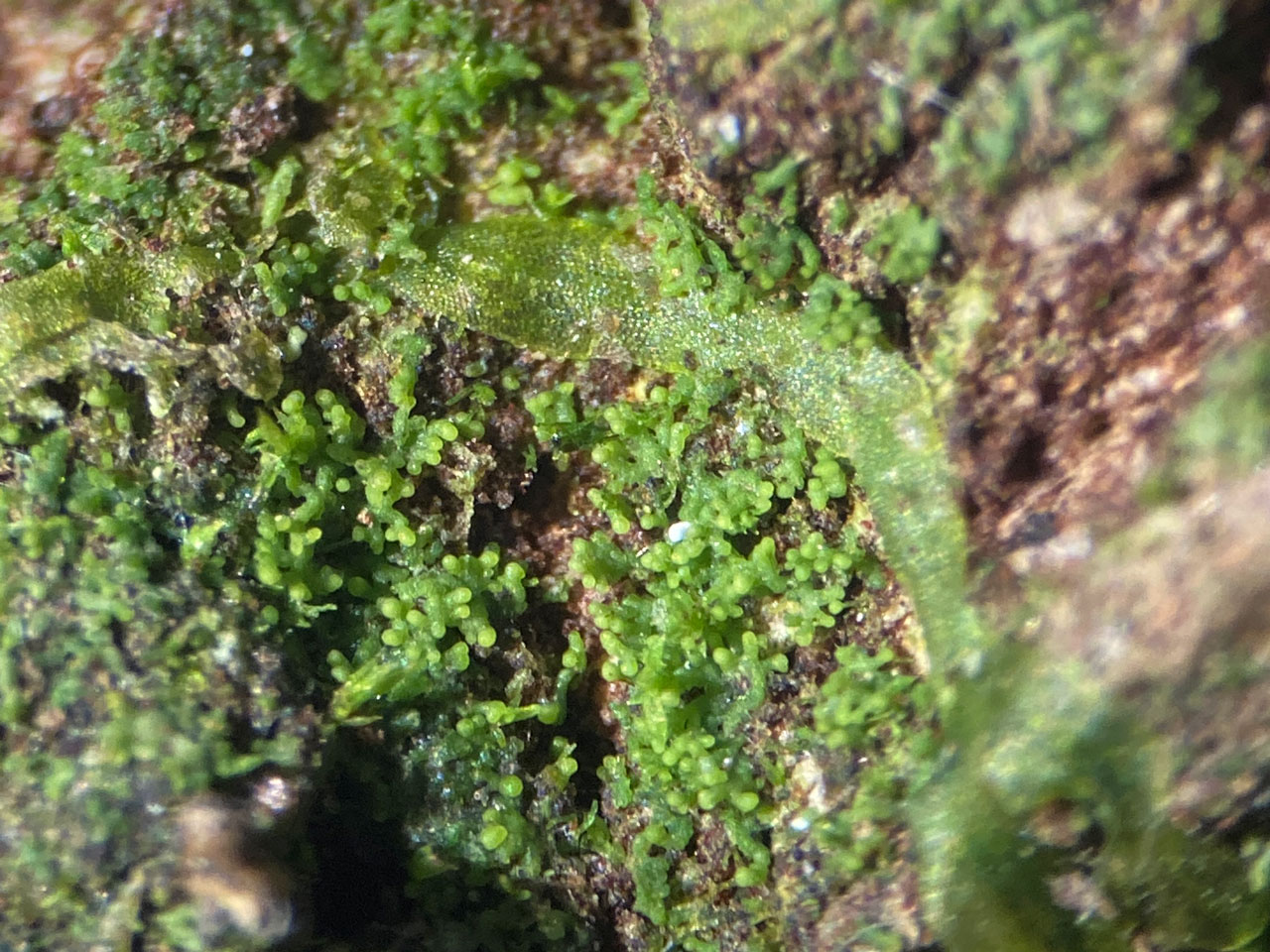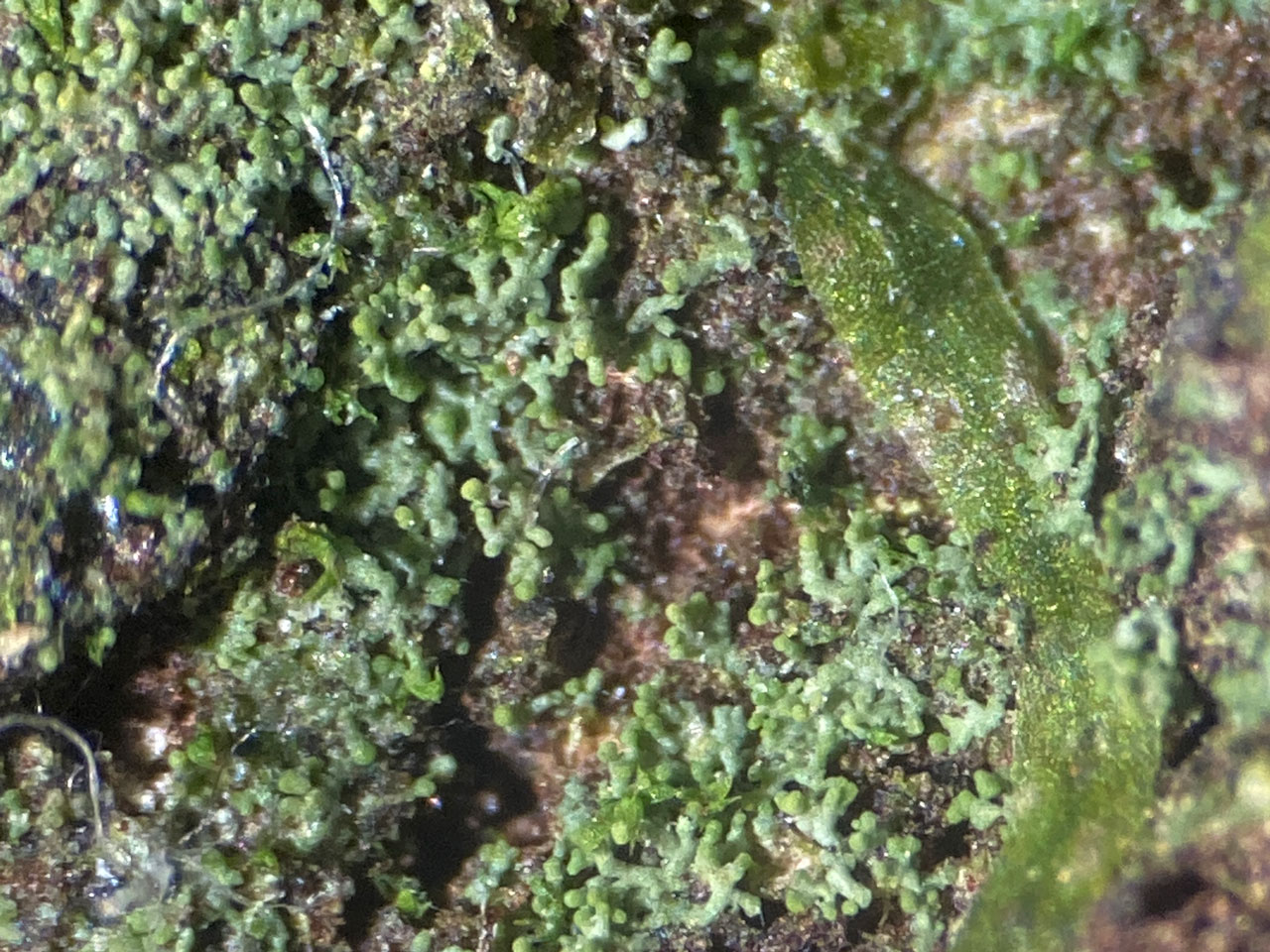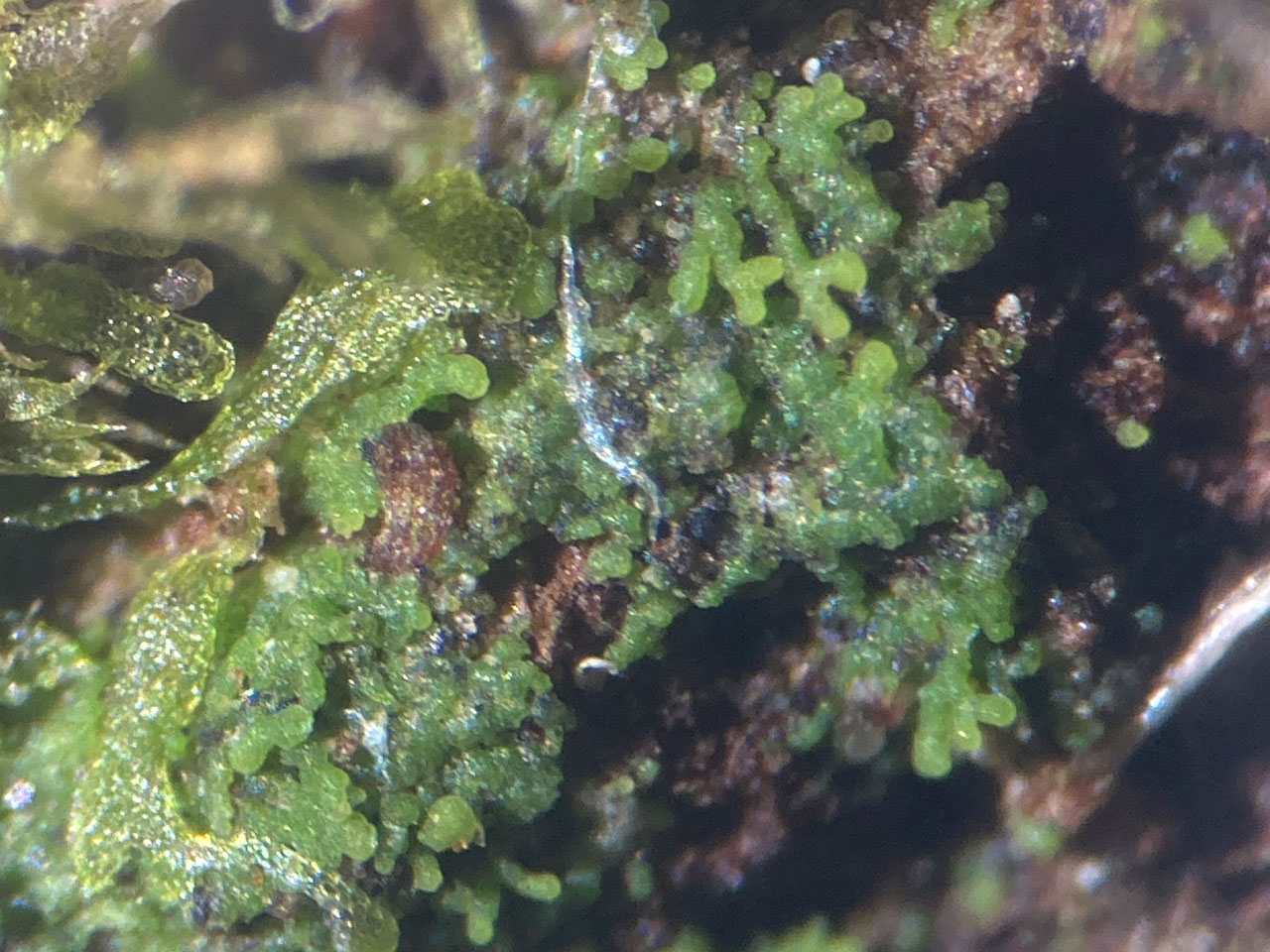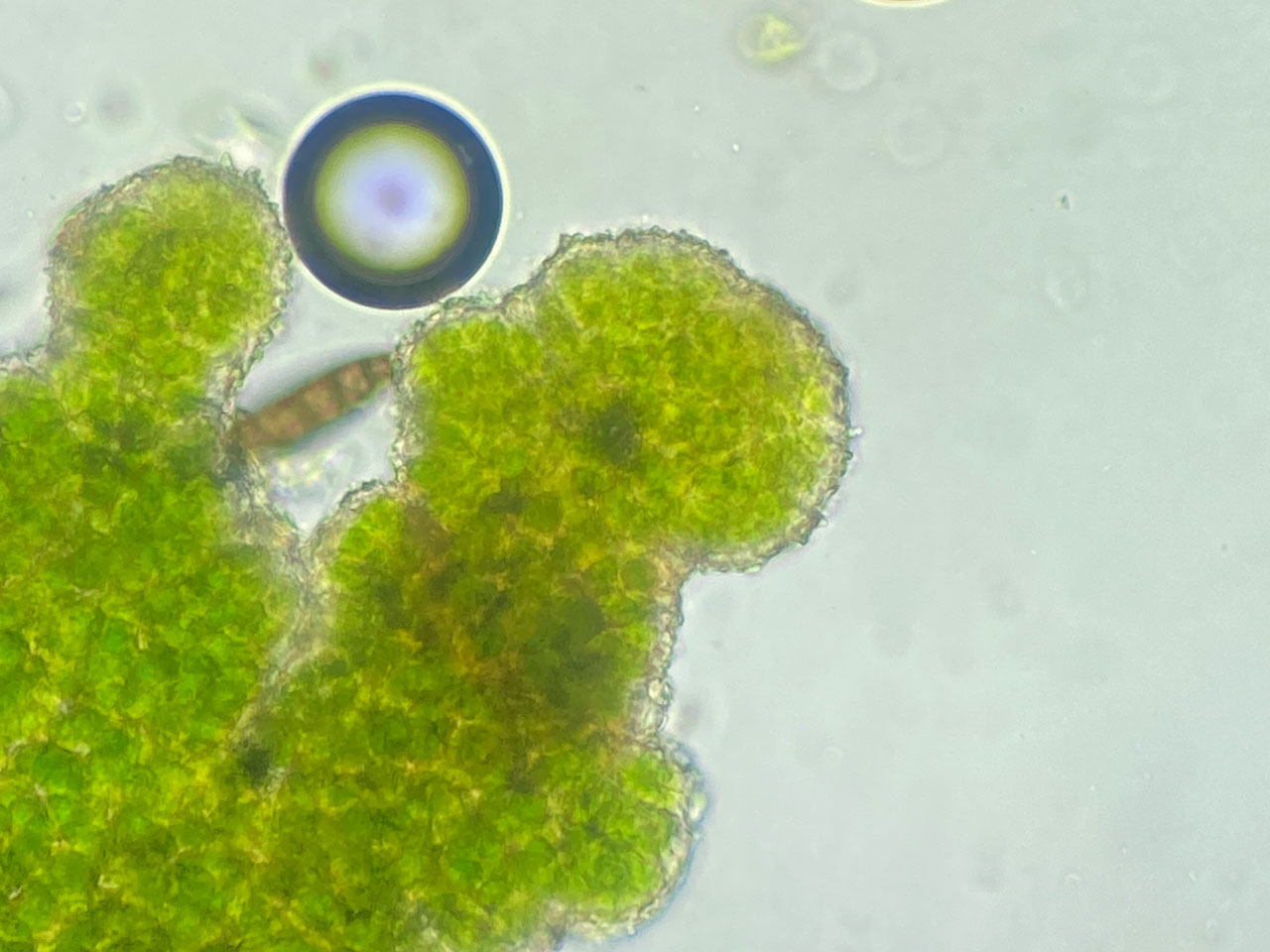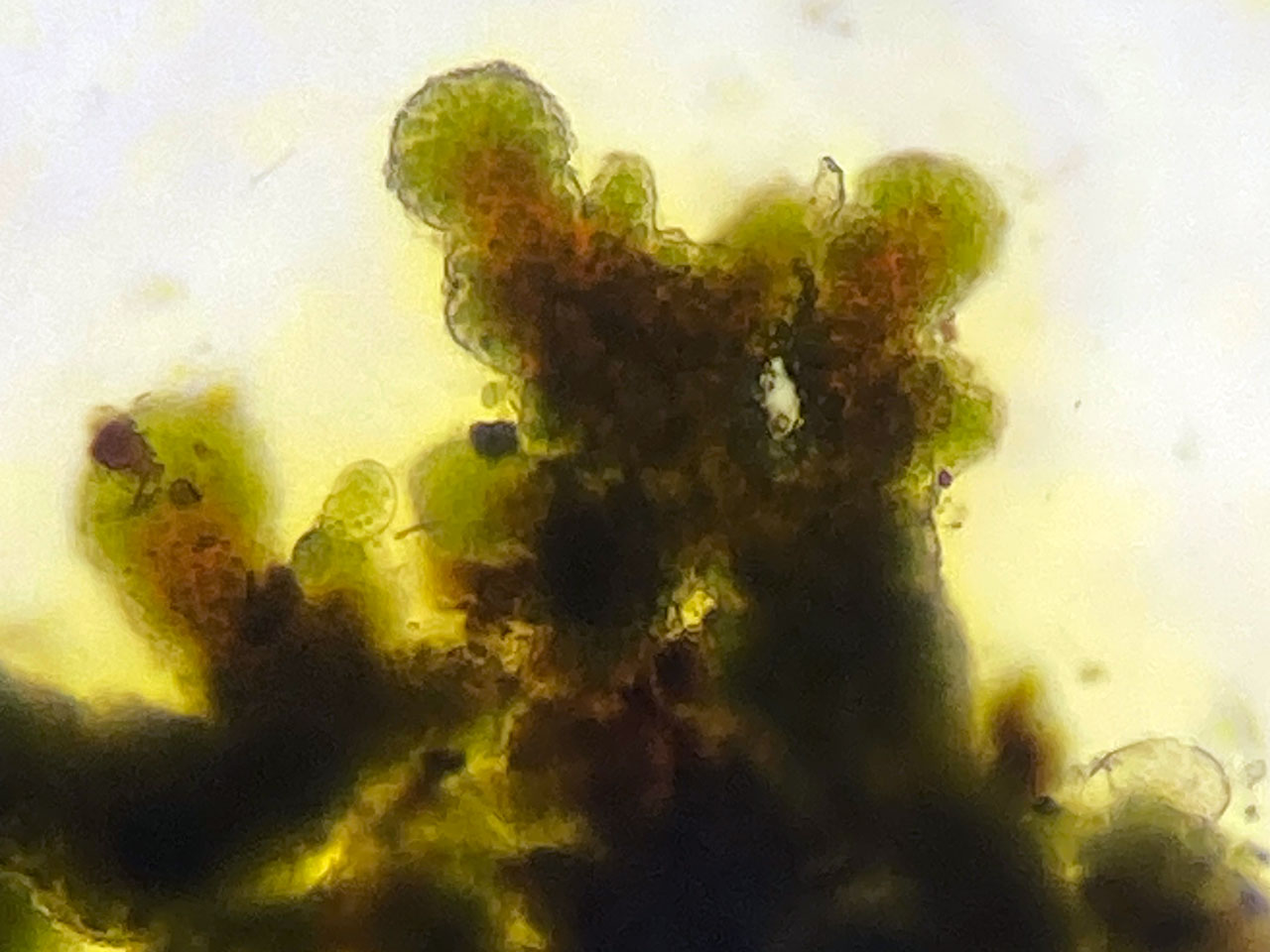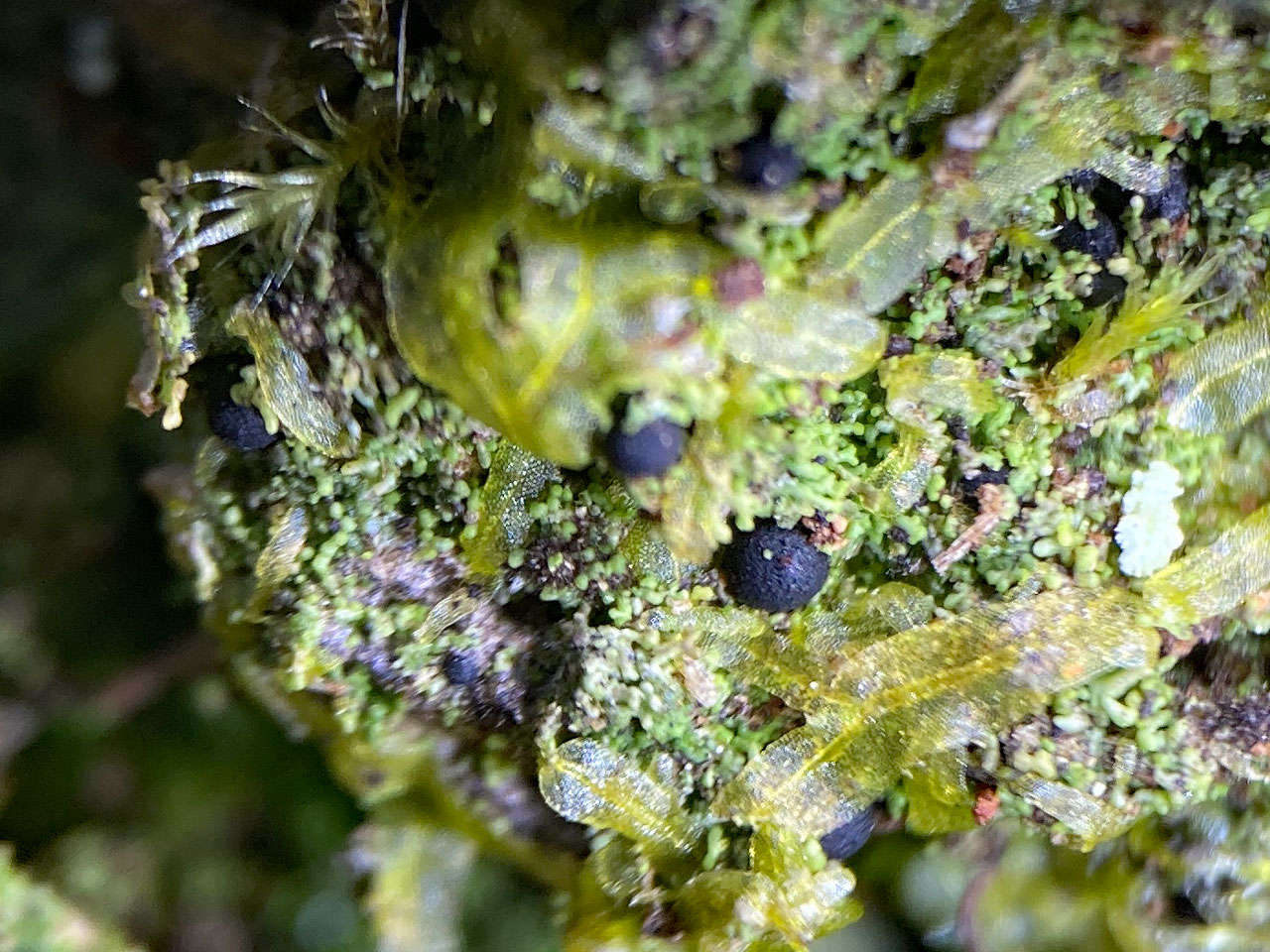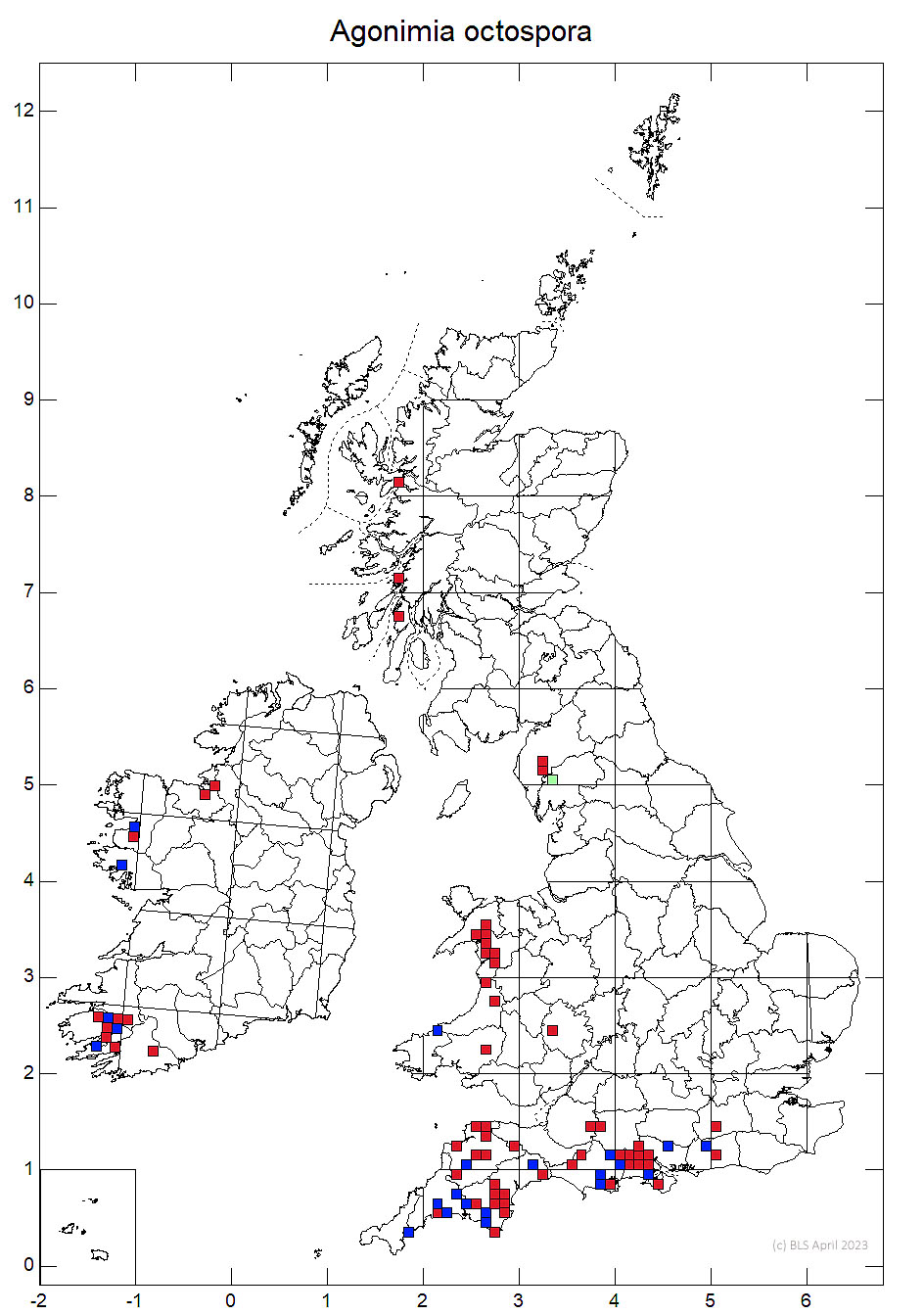Agonimia octospora
A tiny green squamulose lichen with delicate narrow bony finger like squamules, forming striking over lapping mats when well developed but easily over looked when sparse. Grows on damp base rich bark on veteran trees in warm and humid woods in the south west. Can be very abundant in undisturbed old growth stands but often rather rare. Resembles Rinodina isidioides, which can grow in the same woods, but this dries to a slivery grey clour and forms distinctive rosettes of squamules when well developed.
Thallus minutely squamulose; young thalli can have a basal crustose thallus from which the squamules grow, but this disappears as the squamules develop, squamules ± elongate, to 250 μm in length, of narrow lobes 40–100 μm broad, lobes sparingly to repeatedly branched, fragile, terete or slightly flattened (especially when the thallus is poorly developed), irregularly and slightly constricted, matt, pale grey-green dry, bright green when wet, scattered and dispersed or in more or less contiguous groups and becoming imbricate; surface cells with papillae which are easily seen under a 40× objective. Photobiont cells 6–10 × 5–8 μm. Perithecia occasional, scattered amongst squamules, 460–800 μm, one-quarter- to half-immersed, globose or ± pyriform, black, matt or ± glossy, the surface smooth or slightly roughened or shallowly fissured above; exciple 120–160 μm thick, ostiole somewhat papillate, pale pink-grey to black, often eccentric. Asci 8-spored. Ascospores ellipsoidal, muriform, 60–75 (–85) × 20–26 (–30) μm.
The perithecia sometimes occur near to, but not contiguous with, the squamules. Sterile specimens can be confused with Agonimia tristicula, which has distinctly wider flattened lobes. The isidiate lobes of Rinodina isidioides can look very similar in size and shape: they are paler, grey rather than grey-green when dry, but similar bright green when wet, and are visibly K+ yellow and K/UV (dry)+ bright yellow (though testing these rare species in the field is scarcely recommended). Confusingly, A. octospora squamules frequently diffuse a yellow pigment when irrigated with K viewed under a microscope, but this is not field visible, nor does the thallus give a K/UV (dry)+ bright yellow spot test. The surface of the lobes in Rinodina isidioides is of isodiametric to shortly oblong cells, but is distinctly hyphal in squashes, unlike the apparently non-hyphal surface of Agonimia; some of the surface cells project, giving a knobbly outline under the microscope, but they are smooth, without papillae; the photobiont cells are 7–14.5 μm long.
On base-rich bark of trunks of aged Quercus and Fagus, often amongst mosses, in somewhat sheltered situations in old woodlands. Locally abundant in the New Forest in old growth high forest pasture woodlands, but rather scarce beyond. A characteristic species of shaded humid old woodlands in southern Atlantic to humid Mediterranean climates and a defining species of the Agonimion octosporae Alliance. This essentially replaces the Lobarion pulmonariae in warmer humid and rather shaded habitats. In the New Forest Agonimion octosporae species tend to replace Lobarion pulmonariae lower down on the trunks.

Frequently recorded in S.W. England, the New Forest and Wales, scattered records from the Lake District, W. Scotland (Kintyre, Argyll, Skye), also S. and W. Ireland.
In Britain this species has an enormous population in the New Forest but is otherwise confined to small numbers of trees. In the New Forest, between 2000 - 2022, it had been recorded from 129 1km grid squares and 478 100m grid squares, and potentially occupies 1,000s of trees. Beyond this, most sites in Britain typically have less than 10 trees. The next largest known sites are Coedydd Maentwrog, Meirionnydd with 23 trees (Sanderson, 2020) and Boconnoc Park, Cornwall with 22 trees (Sanderson, 2010). In Ireland large populations also occur, especially in Killarney, Co. Kerry.
Britain: Near Threatened & an International Responsibility species
Wales: Vulnerable
Orange, A., Cannon, P., Prieto, M., Coppins, B., Sanderson, N. & Simkin, J. (2023). Verrucariales: Verrucariaceae, including the genera Agonimia, Atla, Bagliettoa, Catapyrenium, Dermatocarpon, Endocarpon, Henrica, Heteroplacidium, Hydropunctaria, Involucropyrenium, Merismatium, Nesothele, Normandina, Parabagliettoa, Placidopsis, Placidium, Placopyrenium, Polyblastia, Psoroglaena, Sporodictyon, Staurothele, Thelidium, Trimmatothele, Verrucaria, Verrucula, Verruculopsis and Wahlenbergiella. Revisions of British and Irish Lichens 31: 1-104
Sanderson, N. A. (2020) An Epiphytic Lichen Survey of Coedydd Maentwrog NNR, 2018 & 19, Meirionnydd. A report by Botanical Survey & Assessment to Natural Resources Wales.
Sanderson, N. A. (2010) Lichen Survey & Condition Assessment of Boconnoc Park & Wood SSSI, Cornwall, 2010. A report by Botanical Survey & Assessment to Natural England.
Text by N A Sanderson, based on Orange et al (2023)
